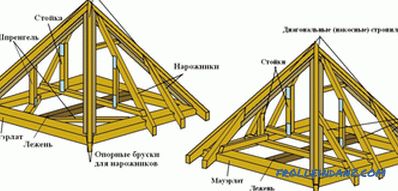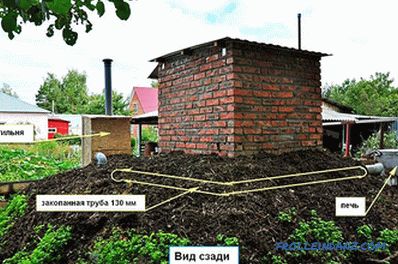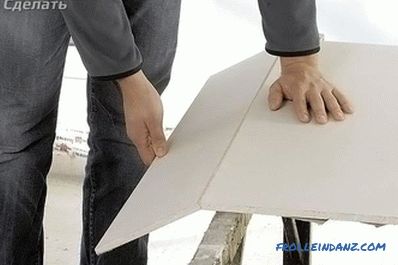Having decided to make repairs in an apartment or in a private house, many people pay attention to the fact that old cast iron batteries do not fit into the interior. But it's not just beauty, because the old battery can be hidden behind a beautiful screen. Most often, the need to replace batteries arises from the fact that new radiators not only work more efficiently, but also save fuel consumed for heating. This article will discuss how to install a bimetallic radiator, without resorting to the services of qualified professionals. By doing this work yourself, you can not only save on installation, but also transform the room.
Device and features
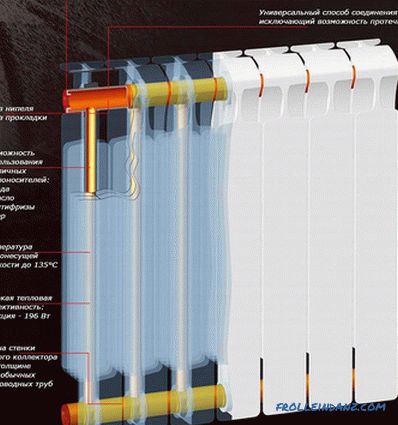 The device of a bimetallic radiator
The device of a bimetallic radiator
A distinctive feature of a bimetallic radiator is his device - it is made of two types of metals. At the base is the core (made of steel or copper), through which the coolant passes. An aluminum shirt is placed over the core.
When choosing bimetallic radiators, it is necessary to clarify whether they are not “semi-metallic”, the internal channels are made of steel pipes, and the rest is aluminum. Such radiators are less durable, are not resistant to hydraulic shocks and do not withstand high pressure.
Bimetallic radiators are distinguished:
- high strength;
- resistant to high pressure of hot water (up to 30 atm.);
- long service life (over 20 years);
- a small center distance, which contributes to a more efficient heating of the room;
- used in the manufacture of high-strength material resistant to mechanical stress.
 The design of the heater from the bimetal
The design of the heater from the bimetal
Vertical tubes of radiators have a small diameter, so that the volume of coolant required for the operation is significantly reduced.
It is also worth mentioning that radiators, despite their resemblance, may differ in price. This is due to the fact that in cheaper systems noise may appear due to the fact that steel and aluminum are heated simultaneously. More expensive radiators are coated with a polymer coating that can significantly muffle such sounds.
We determine the number of sections
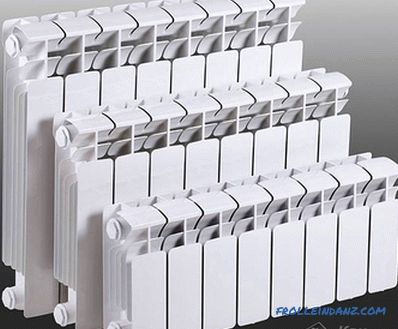 The radiators differ in height
The radiators differ in height
To make the room comfortable temperature, and the boiler did not work at the limit of its capabilities, you need to perform simple calculations, thanks to which you can find out how many sections are required for each room. You need to know the area of the room and the power of a separate section of the heater.
- The area of the room will be recognized by multiplying 3 sides - width, length and height.
- The power of the radiator is indicated in the passport of the product.
Calculation example
 We calculate
We calculate
- K For example, a room has dimensions of 3 * 4 * 2.6 m. By multiplying these numbers, we get 31.2 m 3 .
- We will conditionally assume that each section of a bimetallic radiator has a power of 200 watts.
- For convenience of calculations, we divide the power by 100: 200/100 = 2.
- Now we divide the area of the room by the resulting figure: 31.2 / 2 = 15.6.
- The resulting figure is the result, which reflects the number of sections required for installation in the room.
- Since it is impossible to acquire 15.6 sections, we round the figure up. The result was 16 sections.
The above calculation of the number of sections for a room means that the walls are warm and the windows are not blown through. Otherwise, the number of radiator sections will have to be increased.
Location
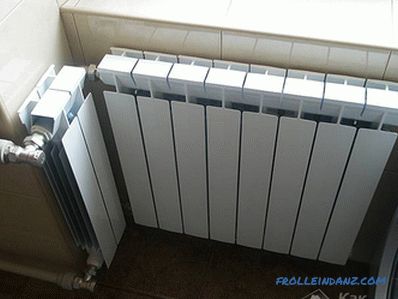 Location of the radiator
Location of the radiator
When working, you need to use SNiP 3. 05. 01-85, which contains standards for internal sanitary systems. Let us consider in more detail these norms and requirements:
- The heating radiator must be installed at some distance from the wall (3-5 cm). If the device is installed too closely, there will not be good air circulation, as a result of which its efficiency will be lower.
- The distance of the radiator from the floor should be within 10 cm, and from the edge of the sill 8-12 cm, otherwise the efficiency of heat transfer will decrease.
Radiators come in different heights, so when choosing a product, consider the distance from the window sill to the floor.
Installation of radiators
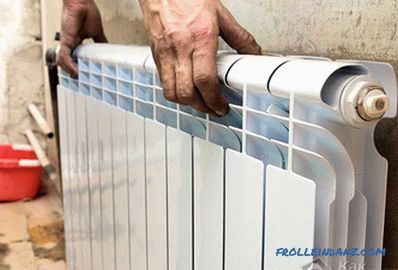 Installation of battery
Installation of battery
It is quite clear that for work you will need tools:
- a set of wrenches;
- tape measure;
- punch;
- simple pencil;
- hammer ;
- Bulgarian.
If the entire pipeline has not been replaced, then it is necessary to clean the communications through which the coolant will circulate and install a filter on the supply riser.
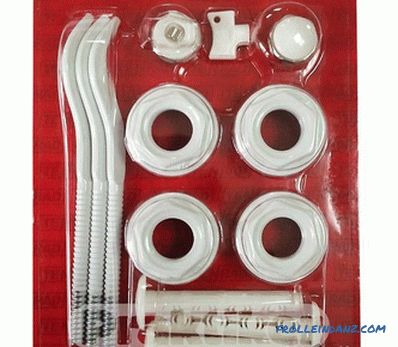 Battery installation kit
Battery installation kit
Installation of bimetallic radiators is carried out in the following sequence:
- On the walls, according to the plan, you need to make a marking, noting the places where the brackets will be located, at such a distance from each other, so that they are located between the battery sections.
- Holes are drilled on the marked marks, and the mount is installed.
- If the radiator is purchased unassembled or needs to be expanded, then, armed with a radiator key, you need to connect the sections, remembering that on the one side there is a left thread, and on the other hand, the right one.
- Radiators are installed on the hooks, and their horizontal position is checked by the building level.
- Now you need to connect the supply and return communications with the heating system.
- Stop valves are installed on the pipes.
- At the top of the radiator, you need to install an Mayevsky automatic tap that will release air from the battery.
- After installation, the system is filled with water and checked for tightness (pressure testing can be performed).
Note
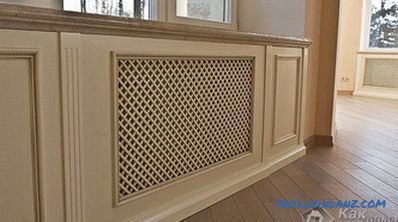 Screen
Screen
- Bimetallic Radiators It is not recommended to close the screen, as it will significantly reduce the heat transfer of the device. In addition, if automatic regulators are installed, they will be triggered by a temperature change under the screen, and not indoors.
- If you need to install more than ten sections for space heating, you do not need to combine them into one battery. The efficiency of this assembly will be sensitive lower than two batteries with the same number of sections.
- If air too often has to be released from the system, then this may be a sign of a malfunction (the tightness of the boiler or radiator is broken).
- Installation work is best performed during that time of year period when there is no heating.
Video
See how you can independently install a bimetallic heating radiator on metal pipes without using welding:
Photos
 Unpacking the battery
Unpacking the battery
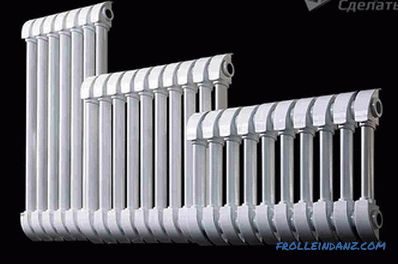 Bimetallic heating radiators
Bimetallic heating radiators
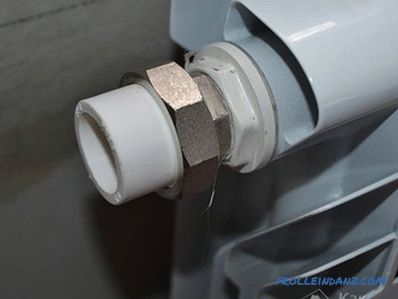 The American adapter
The American adapter
 Check the horizontal position of the installed radiator
Check the horizontal position of the installed radiator
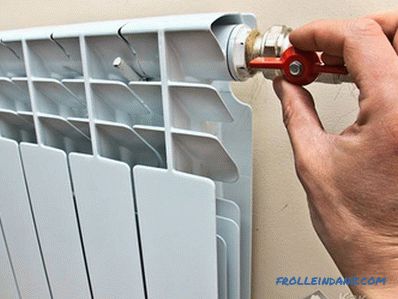 Open the water supply
Open the water supply
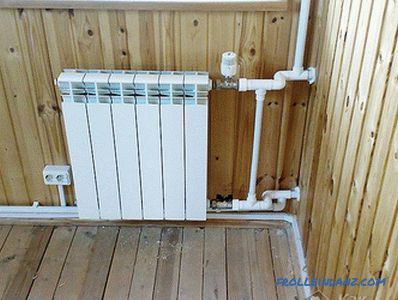 Radiator in a wooden house
Radiator in a wooden house
